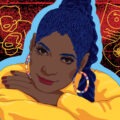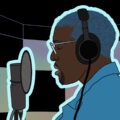Sound design creates and transforms the universe of a project. Building an auditory experience from scratch requires years of sound sourcing, ear training, and trial and error. The key to becoming an exceptional sound designer is training, experimenting, and getting your hands on the materials. To help you get started on your sound design journey, we’ve sourced and answered some of the most frequently asked introductory sound design questions from Quora.
What do sound designers do?
A sound designer is responsible for everything that the audience hears and will typically work closely with the director, production mixer, editor, and sound supervisor in creating the soundscape for the project. This varies on the project size and budget.
Sound sourcing, recording, and editing
Sound designers will usually create sound effects, atmospheres, and all the subtle sounds that make an image or performance come to life. It’s common for them to either source sounds from existing sound libraries or record sounds and then edit them in post-production, creating a new sound. The latter is often used to create a sound that does not exist in real life (ex: lightsaber, dinosaur roars, etc.).
Iconic sound designers include
- Ben Burtt (Star Wars, Indiana Jones)
- Walter Murch (Apocalypse Now, The Godfather)
- Gary Rydstrom (Jurassic Park)
What’s the best way to learn sound design?
Knowing the basics of audio filters, equalizers, dynamic processors, time-based effects, phase, editing in a DAW, microphones, sample rate, etc., is what is going to help you the most. Getting an education on how to use these tools in your project correctly will help speed up your workflow.
Once you understand how these tools work, the best way to get better at sound design is to practice sound design!
Creating sound libraries and A/B’ing your track
Challenge yourself to work on a short clip (30 seconds to 1 minute) of an iconic film at least once a month or even every two weeks. Source through your own sound libraries and record and create sounds of your own. Try and figure out how pro sound designers would have gone about creating the sounds you hear in their films, and see how yours stacks up against theirs.
Sound design is an art, just like mixing, painting, or any performance in the creative arts field. You need to spend time practicing and developing your skills. The more familiar you become with your tools and media, the easier creating sounds will be.
Glossary
Equalization: The process of levelling a frequency (or group of frequencies) within a sound to rid a track of imperfections.
Dynamic Processing: A dynamic processor, like a compressor, reduces the dynamic range of a sound source. A compressor would attenuate the louder portions of a source; as a result, the quieter portions are raised in level, thus reducing the dynamic range from quieter to louder portions.
Phase: The result of combining two or more identical signals of the same source (E.g.: two microphones on an acoustic guitar. The time difference between the two microphones causes phasing, where some frequencies will either be cancelled or boosted).
What is the best microphone for a beginner sound designer? Why?
There isn’t a single best microphone for beginner sound designers. It really depends on what you’re going to be recording. Microphones are tools with different characteristics that each have their own use.
A sound designer would usually interchange between dynamic, condenser, lavalier, and shotgun microphones. The use of these microphones depends on what you’re recording and what sound you’re trying to achieve.
A good mic for beginners
If you’re just starting to record sounds and manipulate them, a cheap Shure SM57 for under $150 will do. This microphone can handle high sound pressure levels, be dropped from skyscrapers, and still work at the end of the day. You won’t have to worry about breaking it.
A must-have mic on set
Now, if you want to invest in your career, then getting a microphone like a Sennheiser MKE-600 would go a long way for you. This is a pretty cheap shotgun microphone that would allow you to record various sounds at a distance, foley, and SFX in the studio. It’s a must-have on-set type of mic.
What the professionals use
Professional sound designers use microphones like the SANKEN CO-100K or the Earthworks QTC 50 microphone. Using high-quality microphones will allow you to fully capture a sound. You want a microphone with a relatively flat response curve that’s capable of capturing high frequencies. When recording at higher sample rates with these microphones (192KHz), you’ll be able to manipulate sounds with little to no artifacts present in the sound.
Mentioned microphones
What software do sound designers use?
In film production, sound design can be done in any DAW that supports video.
In video game production, you’ll typically create sounds in a DAW like Pro Tools or Nuendo, but you’ll also use software like Wwise, FMOD, etc., to add sounds into the game itself.
How important is sound design in films?
Sound design is the reason why films come to life. Sound designers are responsible for all of the sounds the audience hears. It’s the reason you feel like you’re in the same environment as the character and why you feel a particular emotion at a given time.
Imagine a film about a monster where the monster is silent or an action film with no explosions and gunfights. No ambiance, no sound effects, no life!
Sound design glues a film together and brings it to life.
How much do sound design services typically cost?
This varies based on the project. A freelance sound designer may charge between $30-80/hour + expenses. If they need to rent additional equipment, studios, etc., that will be added to the bill.
It depends on the project
Keep in mind, the overall cost is dependant on the project itself. If your project is only a 10-minute short film, it’s going to cost less than a 2-hour film. Also, if your project is a drama, it might cost less than having to create sounds for a monster or action film.
More experienced sound designers with award nominations will charge significantly more than the rates above.
What equipment do sound designers use?
- Audio interface
- Field recorder
- Studio monitors
- Headphones
- DAW (Pro Tools)
- Microphone (SANKEN CO-100K)
- Synthesizers or various plugins or digital effects
- Sound libraries
- The world
As a new sound designer, how much should I charge for hourly work?
This depends on your skillset and portfolio. If you’re a new graduate out of a production school, you can’t charge high rates like other professionals that have been working in the business for years. You should research the market in your area and see what job postings are available or what other sound designers charge as a fee on their websites.
Set your rates according to your skills and experience
Typically, you can charge $20-30/hour as a beginner, as you don’t want to undermine yourself either.
Once you’ve got a portfolio going, you can start increasing your rate to $30-40, etc.
If a client doesn’t have the money to pay you $30/hour, you can assess how long it would take you to complete the project at hand and charge a fixed fee. You can do this by trying to gauge how long you would roughly spend per minute of film.
For example, you might spend four hours per minute of film, so for a 10-minute project, you can ask for $1200 ($30/hour rate). The responsibility to be disciplined with your time would then be up to you.
If the client can’t afford those rates, you need to decide whether you want to work on the project for the client’s rate.
What kind of career opportunities are available for sound designers?
Sound designers can find opportunities in the film/TV industry for recording and SFX creation, the radio/broadcast industry for ad creation, and in the program and game audio industries for promotions and SFX, ultimately creating all the sounds within the realm of a video game.
Where can I study to become a professional sound designer?
Sound designers need skills and knowledge in editing, signal processing, routing, post-production, and so much more. The Sound & Music program at RAC is a well-rounded program that covers the basics to intermediate level of all skills required to design sound for your next project.
Who are we?
Recording Arts Canada is a sound and music production college that offers an online or onsite program with campuses in downtown Montreal and Toronto. Our program combines essential theory, vital hands-on training, and career support, so you can start landing professional opportunities within a year. You can apply for our next cohort here.
Have a sound design question? You can request we answer your question on Quora, and we’ll get back to you as soon as we can.
Illustration by Yihong Guo






















